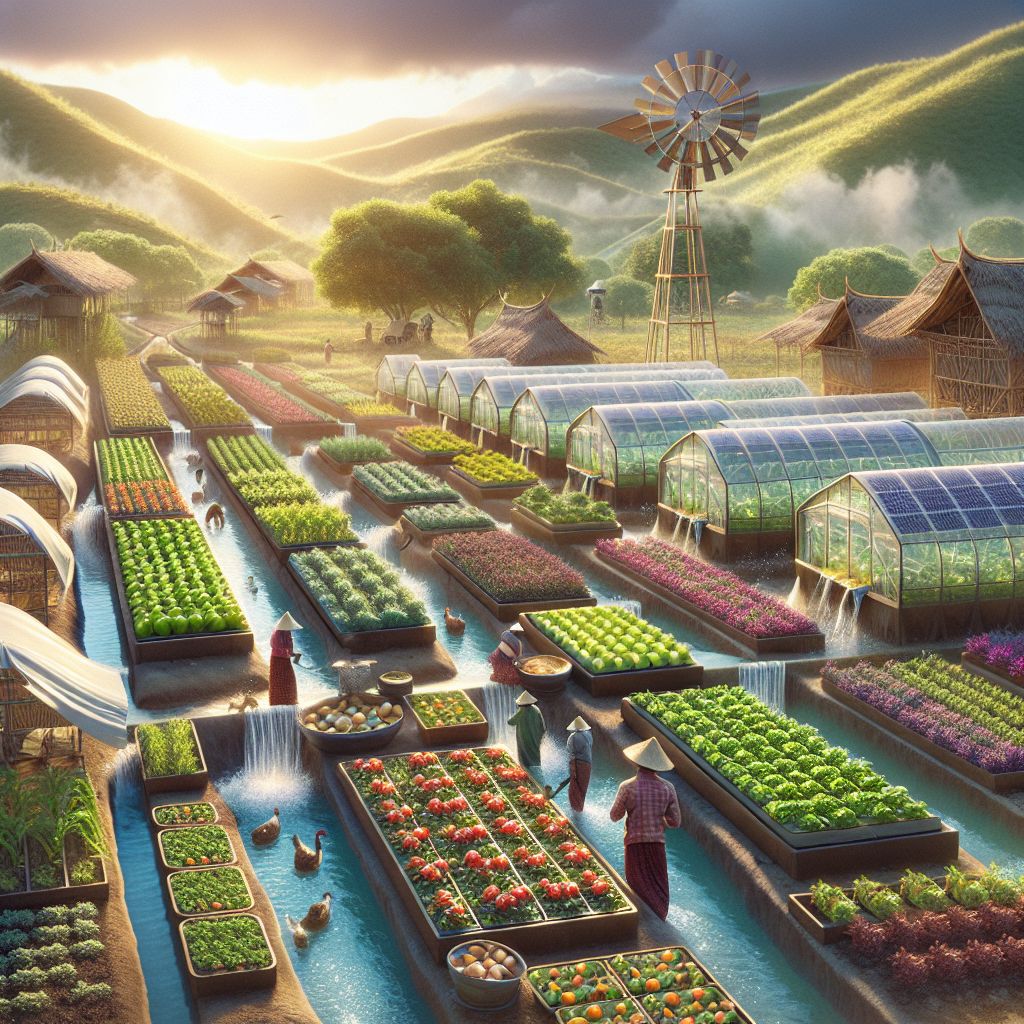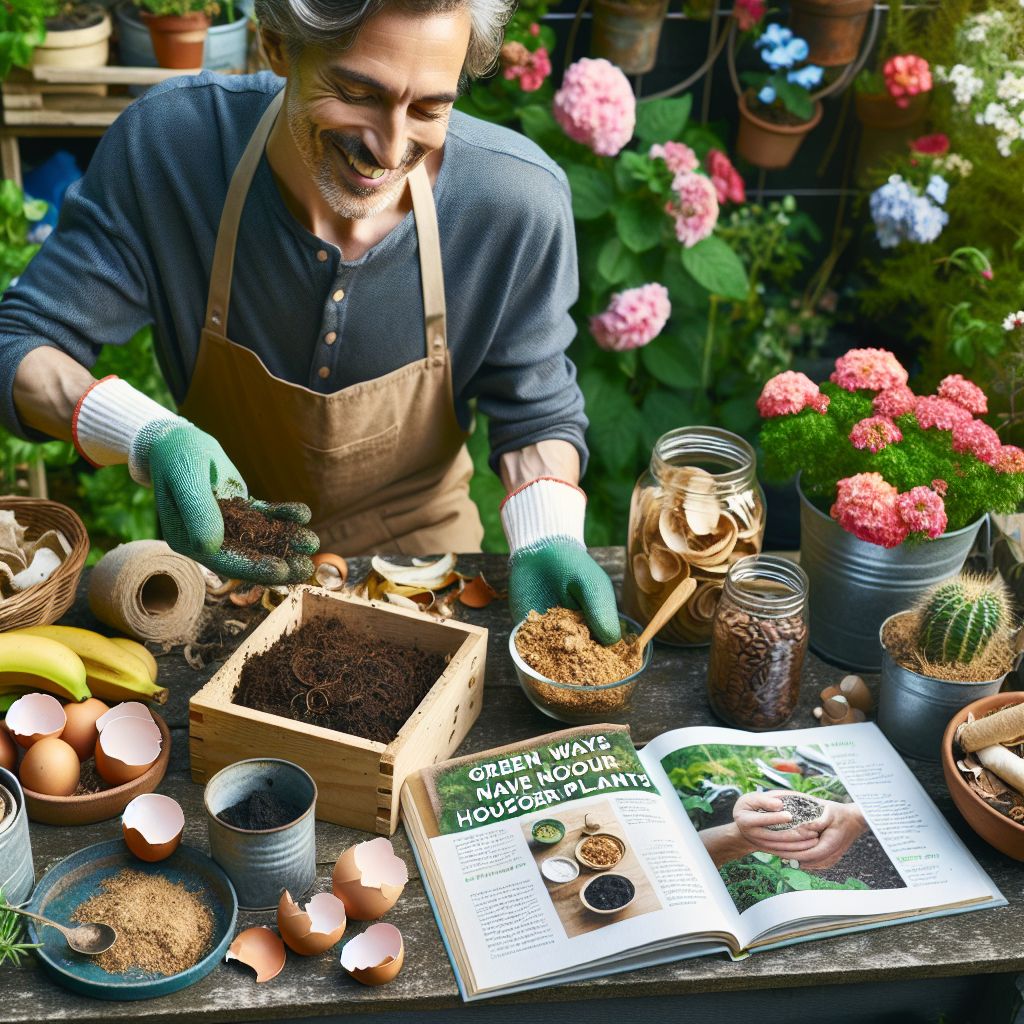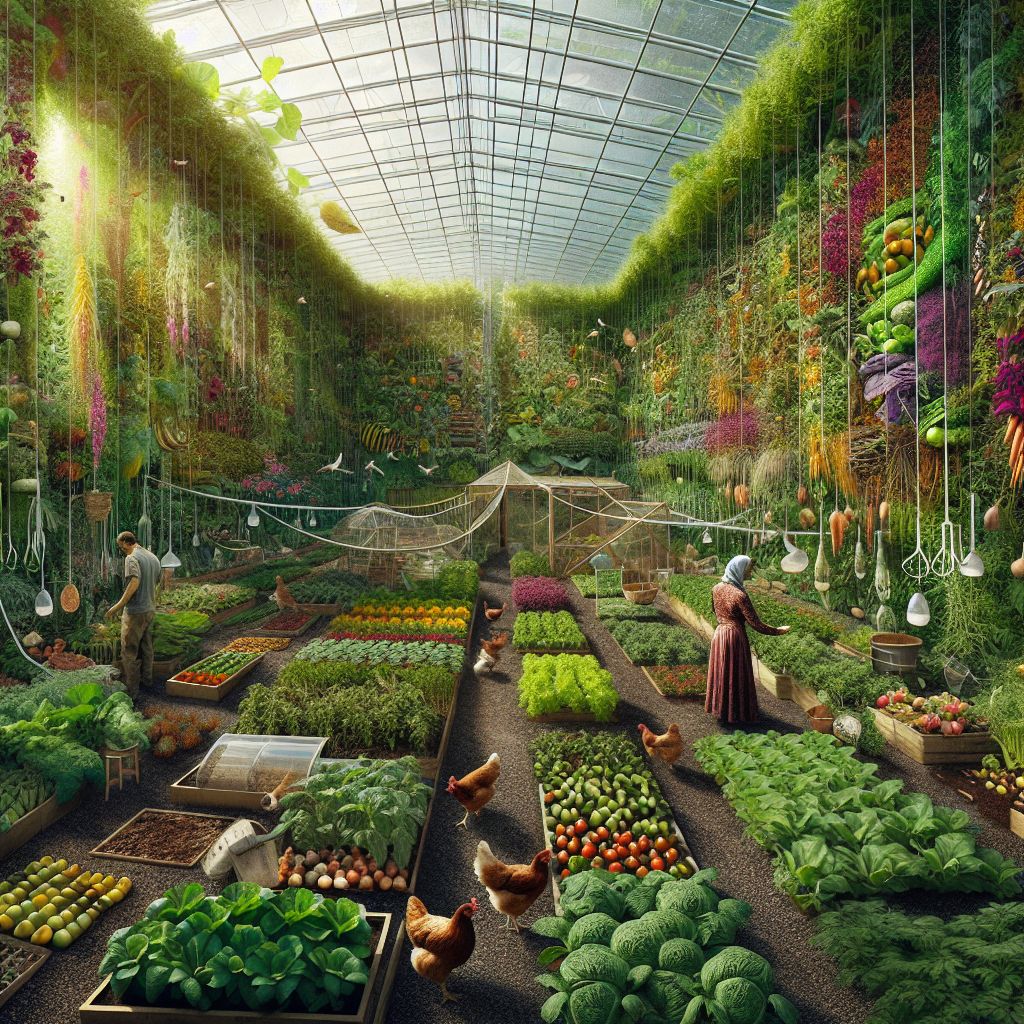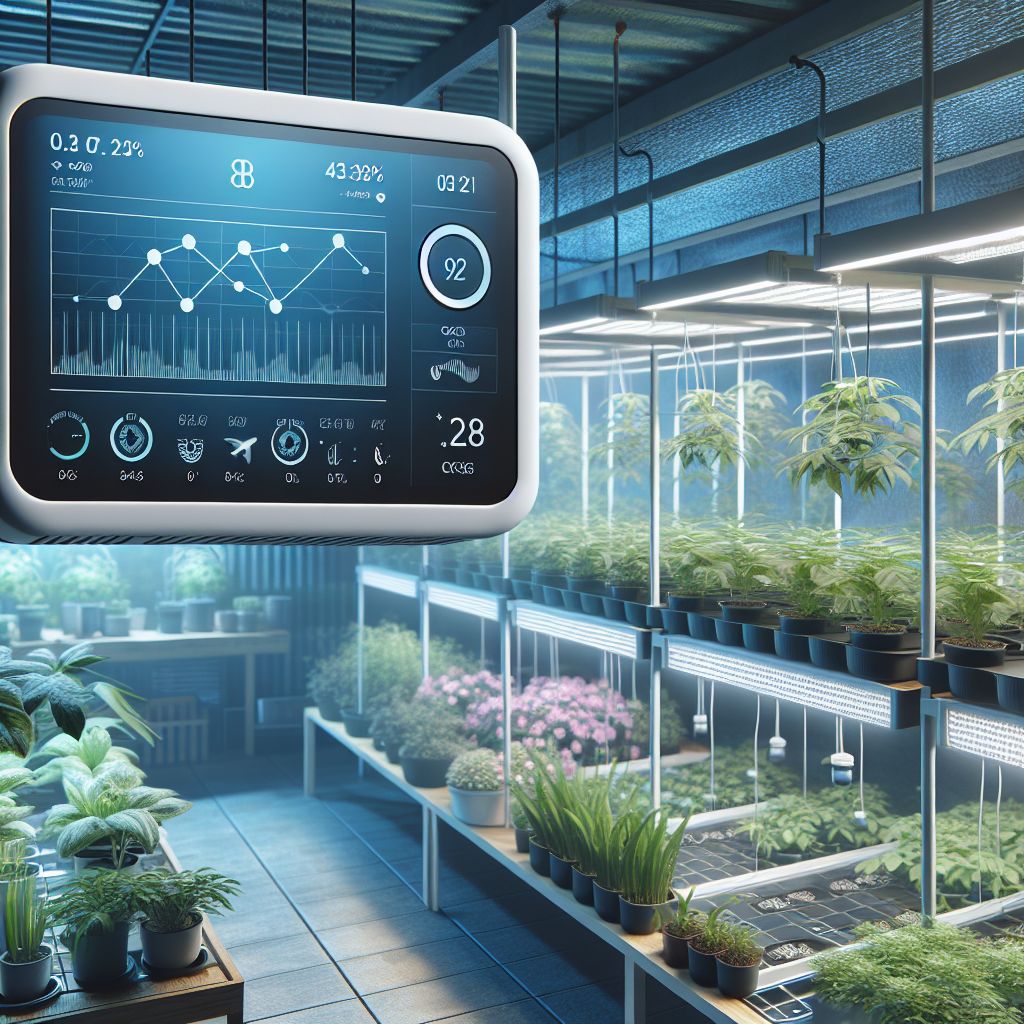Key Takeaways
- Monitoring key metrics like soil moisture, temperature, and light intensity is essential for plant health.
- Every plant species has specific growth requirements that can be met through data-driven strategies.
- Using tools like soil moisture sensors and thermometers helps maintain optimal growing conditions.
- Understanding the role of CO2, nutrients, and water in plant growth allows for targeted care.
- Embracing technology in gardening can lead to more efficient and successful plant growth.
A Green Thumb’s Guide to Optimal Plant Growth
Gardening is not just about planting seeds and waiting for them to grow, it’s a science that requires attention to detail and a deep understanding of the environment around us. By monitoring key metrics and applying data-driven strategies, we can create the perfect conditions for our plants to thrive. Let’s explore how we can use these techniques to master the art of gardening.
Why Monitoring Is Crucial for Plant Health
Imagine you’re taking care of a pet, you wouldn’t feed it just anything or ignore its need for a comfortable environment. Similarly, plants have specific needs that must be met for them to grow strong and healthy. Monitoring the conditions in which they live allows us to make informed decisions, ensuring they receive exactly what they need, when they need it.
The Key Metrics Every Gardener Should Know
There are several vital signs of a garden that you should keep an eye on:
- Soil moisture – Too much or too little water can spell disaster for your plants.
- Temperature – Each plant has a preferred temperature range for optimal growth.
- Light intensity – Light fuels photosynthesis, the process plants use to make food.
- CO2 levels – Plants breathe in carbon dioxide and breathe out oxygen, just like we do in reverse.
- Nutrient levels – Plants need a variety of nutrients from the soil to grow properly.
By understanding and controlling these factors, you’re setting the stage for a show-stopping garden that’s the envy of the neighborhood.
Tools of the Trade: What You Need for Accurate Monitoring
To keep your garden’s vital signs in check, you’ll need a few key tools:
- A soil moisture meter to ensure your watering schedule is on point.
- A reliable thermometer to keep tabs on temperature fluctuations.
- A light meter to measure how much sun your plants are soaking up.
- A CO2 monitor, especially if you’re growing plants indoors or in a greenhouse.
- A soil test kit to check for essential nutrients and pH levels.
These gadgets might seem high-tech, but they’re quite user-friendly and can make all the difference in your garden’s success. For more insights on using technology in your garden, check out our guide on advanced automated greenhouse technology.

“6 tools for smart gardening | CenturyLink” from discover.centurylink.com
The Science of Soil: Getting to the Root of Plant Health
Soil is the foundation of your garden. It’s not just dirt, it’s a living, breathing ecosystem that provides your plants with the nutrients they need to grow. But not all soil is created equal, and understanding its characteristics is crucial.
Soil Moisture: Balancing Water Intake
Plants are picky about their water intake. Some like their soil to be consistently moist, while others prefer a dry-out period between waterings. Stick your finger into the soil, if it feels dry a couple of inches down, it’s time to water. But for a more precise approach, use a soil moisture sensor. This little device will tell you exactly when your plant is thirsty, preventing both underwatering and overwatering, which can lead to root rot.
Remember: Consistency is key. Set a watering schedule based on the data from your soil moisture sensor and stick to it. Your plants will thank you with lush growth and vibrant blooms.
pH Levels: Creating the Perfect Soil Environment
Just as humans have a comfort zone for temperature, plants have a comfort zone for soil pH. The pH level can affect a plant’s ability to absorb nutrients. Most garden plants thrive in soil with a pH between 6.0 and 7.0. If your soil test reveals a pH outside this range, don’t worry—adjusting it is part of the gardening adventure. To raise pH, add lime, to lower it, add sulfur. But do it gradually, sudden changes can shock your plants.
Feeling the Heat: How Temperature Influences Your Plants
Temperature plays a starring role in your plants’ growth. Some like it hot, while others prefer a cooler touch. For instance, spinach and lettuce will bolt in the heat, while tomatoes and peppers bask in the sunshine. A good rule of thumb is to know the ideal temperature range for your plants and watch the weather. A sudden cold snap or heatwave can put your plants at risk, so be prepared to protect them with covers or shade if necessary.
Reading the Thermometer: Ideal Temperatures for Varied Species
Every plant species has its temperature preferences. Cool-season crops like broccoli and peas flourish in cooler temperatures, whereas warm-season crops like cucumbers and squash need more heat. Keep a garden journal with notes on how your plants react to temperature changes—it will be an invaluable resource as you fine-tune your garden’s environment.
Managing Microclimates in Your Garden
Your garden is a world of its own, complete with microclimates. These are small areas that can be warmer or cooler than the surrounding space. Pay attention to these spots. Maybe there’s a corner that gets extra sun or a section that’s always in the shade. Use these microclimates to your advantage by planting species that will thrive in those conditions.
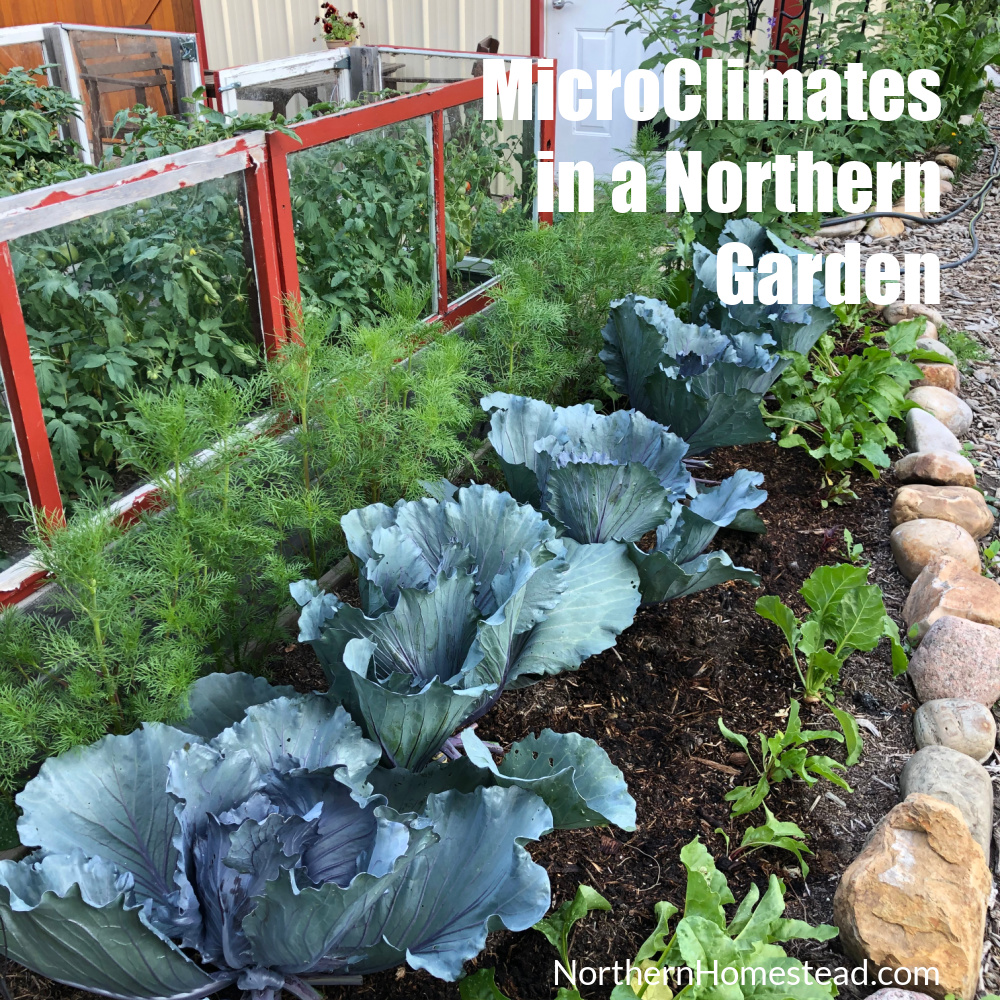
“Microclimates in a Northern Garden …” from northernhomestead.com
Let There Be Light: Understanding Photoperiods
Light is the energy source for plants, but did you know that the length of light exposure, or photoperiod, also affects their growth? Some plants require long days of light to flower, while others need shorter periods. Knowing your plants’ photoperiod requirements will help you plan your garden layout, especially if you’re using artificial lighting.
Measuring Light Intensity for Photosynthesis
Photosynthesis is how plants turn light into food, and light intensity directly impacts this process. Use a light meter to measure the intensity of light your plants are receiving. If you’re growing indoors, you may need to adjust the position of your grow lights or even the wattage to ensure your plants are getting just the right amount of light.
Artificial vs. Natural Lighting: Striking the Right Balance
Sometimes, Mother Nature needs a helping hand. On cloudy days or during short winter days, artificial lighting can supplement natural sunlight. But be cautious—too much artificial light can be just as harmful as too little. Use timers and dimmers to mimic natural light patterns and give your plants the rest they need.
The Air Up There: Why CO2 and Oxygen Matter to Your Plants
Plants need to breathe, and the quality of the air they take in can significantly affect their health and growth. CO2 is their air food, and oxygen is the byproduct of their respiration. Ensuring that your plants have the right balance of these gases is crucial for vigorous growth.
Boosting Plant Growth with CO2 Enrichment
“In a controlled environment like a greenhouse, adding CO2 can supercharge your plants’ growth. It’s like a power-up for photosynthesis.”
To enrich your garden with CO2, you could use a simple DIY setup with yeast and sugar, or invest in a CO2 generator. Just remember, this is advanced gardening—monitoring is essential to avoid overdoing it, as too much CO2 can be harmful.
Most importantly, CO2 enrichment is not a one-size-fits-all solution. Consider the size of your growing area, the types of plants you’re growing, and their specific needs before diving in.
Therefore, before you start, research your plants’ CO2 requirements. With the right setup, you can see a noticeable improvement in growth rates and yields.
Ensuring Proper Ventilation for Optimal Oxygen Absorption
Air circulation is just as important as the CO2 itself. Good ventilation helps to distribute the CO2 evenly and allows plants to get rid of the oxygen they produce. This is especially important in enclosed spaces like greenhouses or indoor gardens. Use fans to keep the air moving and vents or windows to let fresh air in. Your plants will breathe easier, and so will you.
Besides that, proper ventilation helps prevent issues like mold and mildew, which thrive in stagnant air. Keep an eye on humidity levels too—a dehumidifier might be necessary if things get too damp.
Nutrients: The Building Blocks of Plant Life
- Nitrogen for leaf growth
- Phosphorus for root and flower development
- Potassium for overall health and disease resistance
Nutrients are to plants what a well-balanced diet is to us. Without the right nutrients, plants can’t perform at their best. A soil test will reveal what’s missing, and you can amend your soil accordingly. Just like a chef adjusts a recipe, you can tweak the nutrient levels in your soil to create the perfect dish for your plants.
Remember, over-fertilizing can be just as bad as under-fertilizing. It’s all about finding the right balance.
Macronutrients vs. Micronutrients: A Balancing Act
Macronutrients are the big three: nitrogen, phosphorus, and potassium. They’re needed in larger quantities and are the main ingredients in most fertilizers. But let’s not forget about micronutrients like iron, magnesium, and calcium. Though needed in smaller amounts, they’re just as crucial for plant health.
Think of macronutrients as the main course and micronutrients as the spices—they complement each other to create a meal that’s satisfying and complete.
The Role of Fertilizers: When, How, and How Much?
Fertilizers are your plants’ supplements. They provide a boost of nutrients when your soil can’t deliver. But timing is everything. Apply fertilizers when your plants are most receptive, typically in the growing season. Use slow-release fertilizers to provide a steady supply of nutrients, or liquid fertilizers for a quick fix.
Always follow the instructions on the label—more is not always better. Over-fertilizing can burn your plants and upset the delicate ecosystem in your soil.
Stunted Growth: How to Respond to Environmental Stress Factors
When your plants aren’t growing as they should, it’s often a sign that they’re under stress from their environment. This could be due to a lack of nutrients, improper watering, or extreme temperatures. The key is to observe your plants regularly and look for signs of distress, such as yellowing leaves or slow growth. Once you’ve identified the problem, you can take steps to correct it—whether that’s adjusting your watering schedule, providing shade, or supplementing with the right nutrients.
Growing Together: Case Studies in Optimization
Let’s take a look at some real-life examples of how monitoring and data-driven strategies have helped gardens flourish:
Community Gardens: Collective Efforts for Maximum Yield
“By pooling our resources and knowledge, our community garden was able to invest in soil moisture sensors and weather stations. The result? A 32% increase in our vegetable yield in just one season.”

“How to Start a Community Garden …” from seewhatgrows.org
In community gardens, collaboration is the secret ingredient. Gardeners share their experiences and data, leading to better-informed decisions about planting, watering, and harvesting. This collective approach not only improves yields but also fosters a sense of camaraderie and shared success. For more insights on how technology can enhance gardening efforts, read about smart gardening tips.
For instance, a community garden in Oregon used temperature data to extend their growing season. By installing a simple hoop house, they created a microclimate that kept their plants warm, allowing them to grow vegetables like tomatoes and peppers well into the fall.
Another community garden in Michigan used light intensity data to rearrange their garden layout. They discovered that their leafy greens were getting too much sun and wilting. By moving them to a shadier spot and planting sun-loving herbs in their place, they optimized their space for better plant health and productivity.
Vertical Farms: The High-Technology Path to High-Density Growing
- Use of hydroponics to deliver nutrients directly to plant roots.
- LED lighting systems that can be tailored to the specific light spectrum needs of different crops.
- Automated climate control systems for maintaining optimal temperature and humidity levels.
Vertical farming is the pinnacle of data-driven plant growth. In these high-tech operations, every aspect of the environment is controlled and optimized. Sensors monitor plant health, and data analytics are used to fine-tune the system. This results in high-density, high-yield crops that can be grown year-round, regardless of external weather conditions.
For example, a vertical farm in Singapore uses sensors to track growth rates and adjust nutrient levels in real-time. This precise control over the growing environment allows them to produce crops that are not only more nutritious but also more flavorful.
Another vertical farm in Sweden uses a combination of natural light and LED lights to maintain the perfect light intensity for their crops. They’ve found that this hybrid approach results in stronger, healthier plants compared to using artificial light alone.
Frequently Asked Questions
What Are the Most Important Metrics for Plant Growth?
The most important metrics for plant growth include soil moisture, temperature, light intensity, CO2 levels, and nutrient levels. Monitoring these factors helps gardeners provide the best possible environment for their plants to thrive.
- Soil moisture should be checked regularly to prevent both overwatering and underwatering.
- Temperature should be monitored to ensure it stays within the optimal range for the specific plant species.
- Light intensity affects photosynthesis and should be sufficient for the plant’s needs, whether it requires full sun or partial shade.
- CO2 levels are important for photosynthesis, especially in controlled environments like greenhouses.
- Nutrient levels must be maintained to prevent deficiencies or toxicities that can harm plant growth.
Can I Monitor Plant Growth Without Expensive Equipment?
Yes, you can monitor plant growth without expensive equipment by using simple methods such as a finger test for soil moisture, observing the plant’s physical condition for signs of stress, and keeping track of the weather for temperature changes. However, investing in basic tools like a soil moisture meter and a thermometer can provide more accurate data and help you make better decisions for your plants’ care.
How Do I Adjust Plant Care Based on Data Collected?
Based on the data collected, adjust plant care by:
- Watering more or less frequently according to soil moisture levels.
- Providing shade or moving plants indoors if temperatures become extreme.
- Adjusting the position or intensity of lights to meet the plants’ photoperiod requirements.
- Enriching the environment with CO2 if levels are too low, especially in greenhouses.
- Amending soil with the necessary nutrients if a deficiency is detected.
What Are the Signs of Poor Air Quality Affecting Plants?
Signs of poor air quality affecting plants include stunted growth, yellowing or browning leaves, and a general decline in plant health. Ensure proper ventilation and consider using air purifiers if growing plants indoors to improve air quality.


